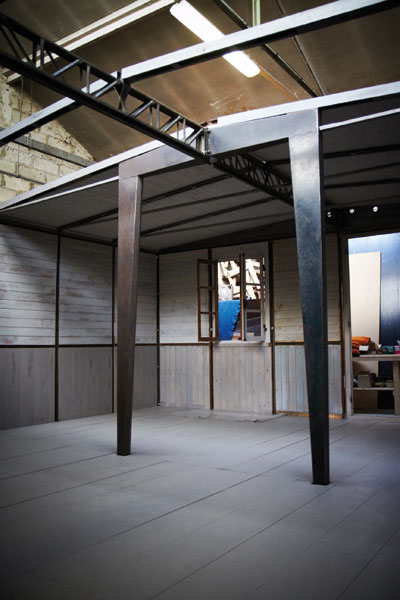|
Jean Prouvé’s 6×9 House, with Easy Armchair and Committee Chair by Pierre Jeanneret |
||
|
Building on the success of its launch event last year, Design Shanghai is bringing three halls of contemporary, classic and collectible design to Shanghai’s Exhibition Centre at the end of March. Morgan Morris, director of the collectible design hall, shares her highlights ICON: What impact has Design Shanghai had in China? Morgan Morris: There’s a lot of buzz about the event because the first year was so fantastic. In China, it’s very refreshing to have such a professional event with collaborations between foreign and local companies. The level of quality and of what people are seeking is
The 6×9 House’s signature compass-shaped structure ICON: One of the main features for this year is a restored Jean Prouvé 6x9m Demountable House by fashion brand Bally, which is on a kind of world tour for its 70th anniversary. [The 6×9 House is the prototype of a 1944 mass-housing design by Prouvé and Pierre Jeanneret to rehouse French citizens displaced by bombing during the Second World War. The house is known for its signature structural principle: a compass-shaped gantry crane.] MM: I visited the first phase of Bally’s exhibition at Art Basel and thought the initiative to preserve the project’s heritage and add new interpretations was really quite exceptional. I was sure that it would be topical to bring a project like this to China and that it would be influential for its values – modernity, functionality, beauty – for Jean Prouvé’s original intentions for the house, and also for its engagement with the artistic community. And it’s the first time a demountable has come to Asia. Bally also has some amazing pieces of Pierre Jeanneret furniture in its own collection – for example, the Committee Chair for Chandigarh (1954). Again, it matches this concept of functionality, balance and purity, and explores the links that exist between art and industry. ICON: The 6×9 House has since been in Miami, and for Shanghai it will be in dialogue with a site-specific installation by Chinese artist Wang Yuyang, curated by Jérôme Sans. What can we expect? MM: The artist generally works with computer-generated images and sculpture, taking very hi-tech concepts and bringing them back to craft. So I think in this case he took a diagram of the Prouvé house and then fed all the proportions and measurements into a program as code. This code creates a sculpture that will be realised by local craftsmen in Beijing. |
Words Icon |
|
|
||
|
Folding Fireside Chair by Pierre Jeanneret |
||
|
ICON: What is the collectible design scene like in China? MM: It’s a very interesting time in the sense that design art is something that people are becoming more aware of. Beyond pure product design, one of the goals this year is to really familiarise people with the incredible world of limited-edition design and how close it is to the art world. It’s an area that is developing very quickly in China and it’s also very interesting because in this sector artists have full support from government. The design sector is much more comfortable for them than, say, art. I also think that it’s very easy to approach. Once you take art into the design arena, it has a function and can touch an enormous amount of people in a considerable way. |
||





















